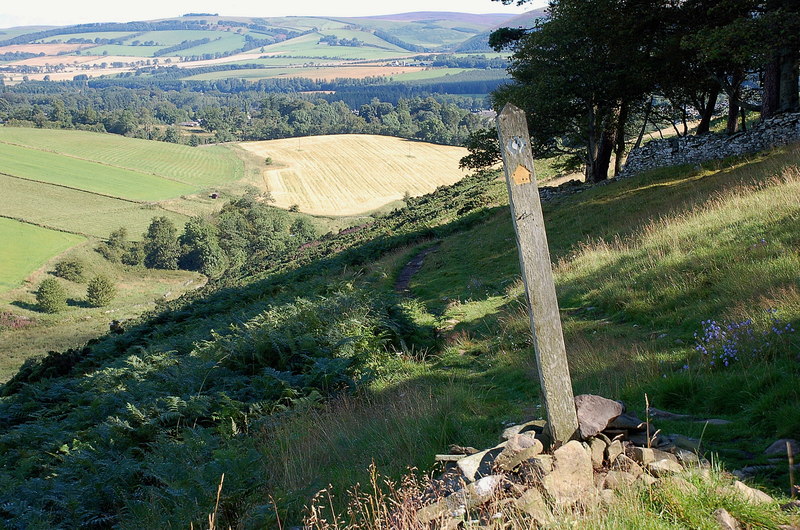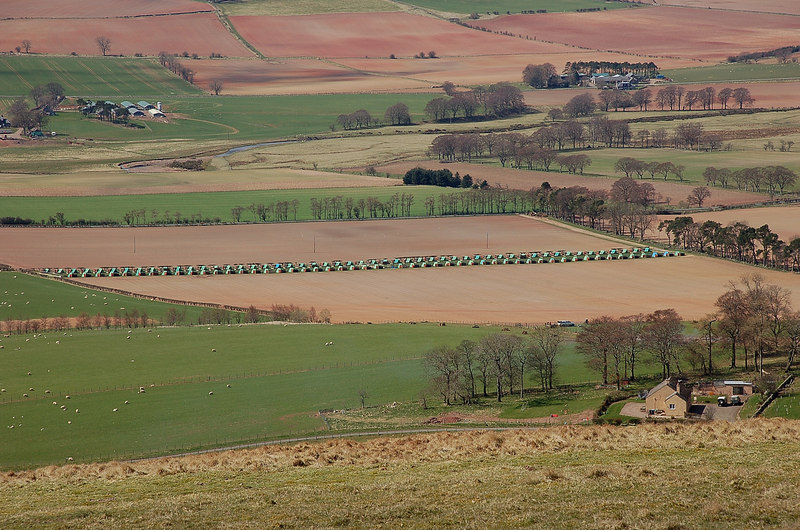Lauderdale MSS on:
[Wikipedia]
[Google]
[Amazon]
 Lauderdale is the valley of the Leader Water (a tributary of the Tweed) in the
Lauderdale is the valley of the Leader Water (a tributary of the Tweed) in the
 Southern Lauderdale could be considered to commence in the vicinity of Newstead. In the north Lauderale ends at part of the
Southern Lauderdale could be considered to commence in the vicinity of Newstead. In the north Lauderale ends at part of the
 Lauderdale is the valley of the Leader Water (a tributary of the Tweed) in the
Lauderdale is the valley of the Leader Water (a tributary of the Tweed) in the Scottish Borders
The Scottish Borders ( sco, the Mairches, 'the Marches'; gd, Crìochan na h-Alba) is one of 32 council areas of Scotland. It borders the City of Edinburgh, Dumfries and Galloway, East Lothian, Midlothian, South Lanarkshire, West Lothi ...
. It contains the town of Lauder, as well as Earlston. The valley is traversed from end to end by the A68 trunk road, which runs from Darlington
Darlington is a market town in the Borough of Darlington, County Durham, England. The River Skerne flows through the town; it is a tributary of the River Tees. The Tees itself flows south of the town.
In the 19th century, Darlington underwen ...
to Edinburgh.
Roman road
Many ancient camps, and many '' tumuli'', are found in Lauderdale. The Roman road into Scotland, Dere Street, which means "the road into the country of the wild animals", crossed a ford at Newstead, nearMelrose Melrose may refer to:
Places
United Kingdom
* Melrose, Scottish Borders, a town in the Scottish Borders, Scotland
** Melrose Abbey, ruined monastery
** Melrose RFC, rugby club
Australia
* Melrose, Queensland, a locality in the South Burnet ...
, where there had been a Roman fort and garrison, and entered Lauderdale. Dere Street is said to have been reconditioned by King Malcolm Canmore and probably used by him in his almost constant warfare against England. The Roman road has now been traced from the Tweed through Lauderdale to Soutra.
Etymology
Lauderdale's name comes from the town of Lauder rather than the Leader Water. The relationship between the names "Leader" and "Lauder" is very obscure; despite their similarity, they may have different origins. Alternatively, they may both go back to a Britonnic root meaning "cleansing water". The name of the valley is first attested in the late 12th century as ''Lauuedderdale''.Medieval period
Symeon of Durham (d. c1130) claimed that the "land beyond the Tweed from the place where rises the river Whiteadder on the north as far as to the place where it falls into the Tweed; and all the land which lies between the river Whiteadder and another river which is called the Leader towards the west; and all the land which lies on the eastern side of that river called the Leader, as far as to the place where it falls into the Tweed towards the south; and all the land which pertains to the monastery of St. Baldred called Tyninghame, from Lammermoor even to Eskmouth, pertains to the land ofLindisfarne
Lindisfarne, also called Holy Island, is a tidal island off the northeast coast of England, which constitutes the civil parish of Holy Island in Northumberland. Holy Island has a recorded history from the 6th century AD; it was an important ...
."
King David I of Scotland created a feudal Lordship of Regality of Lauderdale which he awarded to one of his favourites, the Anglo-Norman Anglo-Norman may refer to:
*Anglo-Normans, the medieval ruling class in England following the Norman conquest of 1066
*Anglo-Norman language
**Anglo-Norman literature
*Anglo-Norman England, or Norman England, the period in English history from 1066 ...
Hugh de Morville (d. 1162), whom he also made Constable of Scotland
The Lord High Constable is a hereditary, now ceremonial, office of Scotland. In the order of precedence of Scotland, the office traditionally ranks above all titles except those of the Royal Family.p60-61, Bruce, Alistair, Keepers of the King ...
. The boundaries of his fief are still unclear, but the town existed before de Morville's arrival, the Lauder family already holding various lands direct from the Crown prior to this, part of which was the estate attached to Whitslaid Tower
Whitslaid Tower was an ancient Berwickshire seat of the Lauder family for over 300 years. It is today a ruin high above the eastern bank of the Leader Water, south of the burgh of Lauder, in the Scottish Borders. In feudal times it fell withi ...
. The de Morvilles of Lauderdale failed in the male line and their Lordship passed by marriage to Alan of Galloway, and a charter exists of "Alani constabularii Scotie, de Alwentchawis" (Allanshaws) in which mention is also made of "terras in territorio de Lauuedir". The Lordship passed to his grandson, John Balliol, and after his forfeiture Robert The Bruce granted it to Sir James Douglas, his great supporter. Archibald Douglas
husband of Princess Margaret, daughter of King Robert III, had a reconfirmation c1390 of the Lordship of "Lauderdaill" as heir of the Earl of Douglas. Archibald is herein also called " Lord of Galloway, Lord of Annandale, and of Lowedre". Finally the Douglases were also forfeited.
Towards the southern end of Lauderdale is the town of Earlston, an ancient superiority of the Earls of Dunbar or March. "Robertus de Lauuedirr tunc noster seneschallus" witnessed a charter of "Patricii de Dunbar, comitis Marchie" during the reign of Robert the Bruce, and "Robetus de Lawedre, consanguineus noster" (a cousin) witnessed a charter of "Georgii comitis Marchie" relating to Sorrowlessfield, a still extant property on the (A68) road south of Earlston in the reign of Robert III.Young (1884) p.19
Geography
 Southern Lauderdale could be considered to commence in the vicinity of Newstead. In the north Lauderale ends at part of the
Southern Lauderdale could be considered to commence in the vicinity of Newstead. In the north Lauderale ends at part of the Lammermuir Hills
The Lammermuirs are a range of hills in southern Scotland, forming a natural boundary between East Lothian and the Borders. The name "Lammermuir" comes from the Old English ''lambra mōr'', meaning "moorland of the lambs".
Geology
The Lammer ...
where they reach 1733 feet,Thomson (1903) p.2 where in winter the weather can be severe, often leading to road closures. The full length of Lauderdale exceeds and its breadth varies from three to seven miles.
Up until the 17th century Lauderdale was an immense forest. From the time of Malcolm Canmore, at least, it was a Royal hunting ground. The entire district between the Leader and Gala Waters was covered with Lauder forest, "the property of the Lauders of Lauder from a very early date" and which was still in the possession of the family of Lauder of that Ilk through to the late 17th century. National Archives of Scotland Deed ref: RH15/25/59
Today Lauderdale is almost completely agricultural.
The principal country house is Thirlestane Castle, the seat since 1595 of the Earl of Lauderdale, and where annual horse trials are held.
The district is part of the Scottish Borders Council's region.
See also
* List of places in the Scottish Borders * List of places in Scotland *All Signs Point to Lauderdale
"All Signs Point to Lauderdale" is the second single from A Day to Remember's fourth album, ''What Separates Me from You'', released on June 7, 2011.
Music and lyrics
Lead vocalist, Jeremy McKinnon wrote the lyrics, while the music was written by ...
Notes